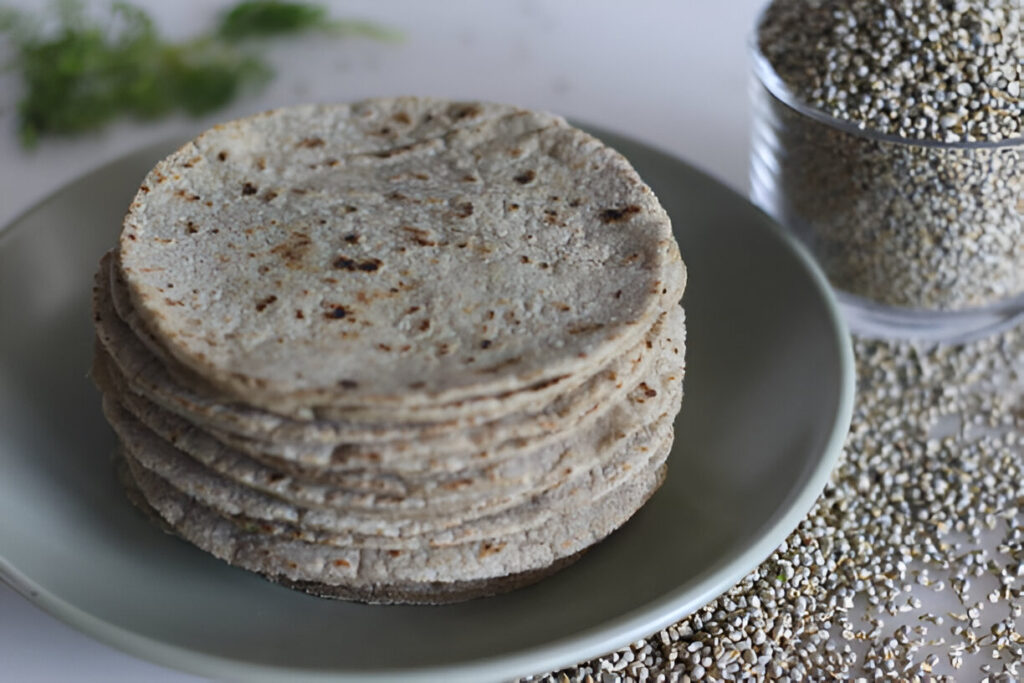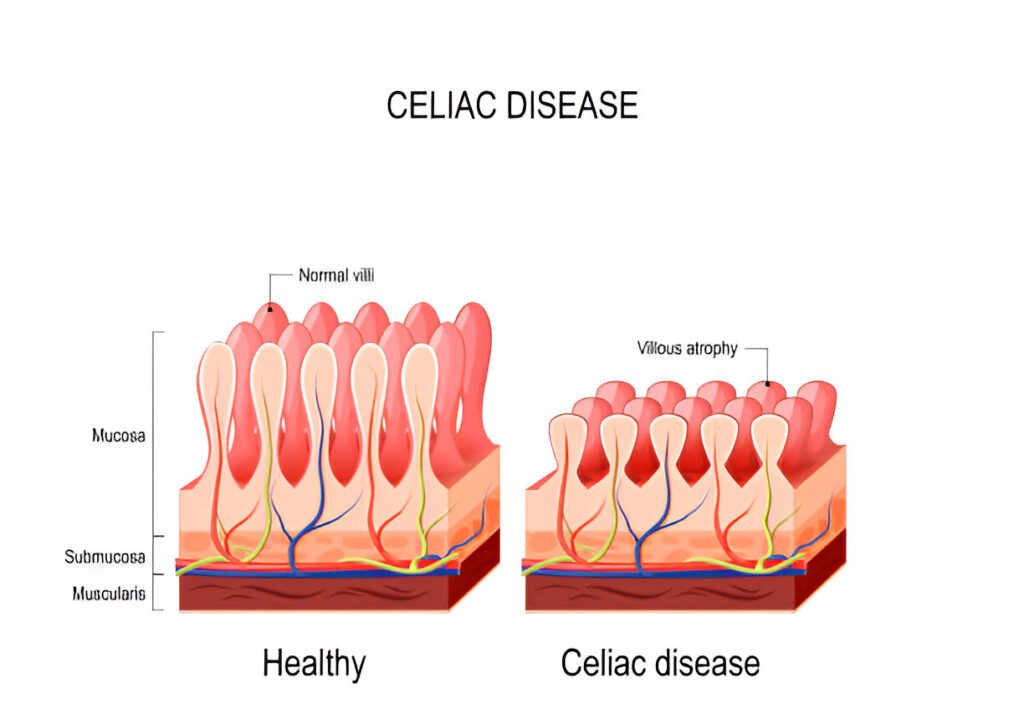The scientific name of bajra is Pennisetum glaucum crop. Bajra is a traditional Hindi name called “Pearl Millet”. It is also known as cumbia, gero, senior, babala, bulrush, and duke millet. This crop is grown in India and Africa, where it is eaten as a staple food. But it is also grown and consumed in other parts of the world. The pearl millet is found in various colours, such as gray, white, brown, bluish, purple and yellow. Bajra is mainly utilized as a cereal grain and may be ground and used as flour.
This article will teach you about the Bajra, nutrition profile, uses and benefits for health.
1. Nutritional profile of Bajra
Bajra pearl millet is one of the types of millet, and other varieties include finger millet, fonio, foxtail and Kodo millet. All millets have unique nutritional profiles. An average of 1 cup of cooked bajra contains the following nutrients:

- Protein: 6grams
- Carbs: 40 grams
- Fiber: 2grams
- Calories: 201
- Fat: 1.7 gram
- Sodium: 286 mg
- Folate: 8% of daily value
- Iron: 6% of daily value
- Thiamine: 15%
- Niacin: 14% of daily value
- Phosphorus: 14%
- Riboflavin: 14% of DV
- Zinc: 14% of Daily Value
- Magnesium: 11% of daily value
- Vitamin B6: 11% of DV
Bajra is the primary nutritional source of carbohydrates, protein, and fibre. It also contains vitamins and minerals. People with celiac disease prefer gluten-free food, so it is an excellent choice for a gluten-free diet. It contains polyphenols, antioxidants, and phytochemicals contributing to human eye health. Polyphenols in Bajra inhibit mineral absorption, such as zinc and iron.
2. Uses
People mainly consume in India and other parts of the world. Here are the uses:

Roti: Call flatbreads made with bajra flour “roti,” and recognize them as a staple food in households in rural areas.
Snacks: Bajra can make papad, bajra chakli and bajra vada.
Porridge: Mix Bajra porridge with milk, nuts, and fruits to create a great breakfast alternative with enhanced taste.
Soups and stews: Soups and stews prepared with bajra are healthier and more nutritious.
Flour in baking: Use a gluten-free alternative to wheat flour for baking and making pasta.
3. How to cook Bajra?
- Use it as a flexible ingredient to prepare a variety of meals. Also it as an alternative to grains like oats, rice, and others. To prepare Bajra, boil two cups of water with one cup of millet. Boil it slowly for 15 minutes, resulting in a fluffy, light-grain Bajra meal. Add 2-3 ml of water growth or dairy to Bajra; it will make it for each texture.
- Toast the dry millet for a few minutes before adding the liquid, which will give it a nutty flavour.
- Before cooking, you can also soak Bajra in the water or dairy products such as kefir and buttermilk for many hours or even days.
- People primarily ferment millet flour in Asia and Africa. It alters its flavour taste and nutritional profile.
- According to a study, frozen and fermented parliament floor for two days contains 30% high phenolic compounds, which help your body fight against ageing, chronic illness, and inflammation.
3.1 Other ways to eat Bajra
Bajara floor is not only limited to flatbreads or roti; it is also used to make pasta and cakes in other recipes to replace different types of flour.
Puffed millet snacks like popcorn are also great snacks to enjoy. Pre-puffed millets are available in the market, and you can prepare them at home. You can eat puffed Bajra alone or make sweet or savoury snack bars.
3.2 How to make Pop Millet?
Add one cup of Bajra to the pan and set the medium-low heat to let the millet sit for a few minutes. Stir it again once it turns golden brown, and then let it sit for a few more minutes until the grain puffs up and pops.
It is difficult to find true Bajra pearl millet, so you can buy it online or at any local store that brings products from Asia, Africa, and mainly India. Bajra flour is also readily available in the market. You can buy it here.
4. Benefits of Bajra for health
It has main health benefits, including
4.1 Diabetes type 2

According to a study of 55465 people between the ages of 50 and 65, men who consumed most whole grains had decreased risk of diabetes type 2 by 34%, and women with a whole grain diet had reduced risk by 22%. Whole-grain fibre is complex for the body to digest. Because it does not cause spikes in blood sugar like other refined grains do.
4.2 Cardiovascular disease
A whole-green Bajra diet helps lower cholesterol, low-density triglycerides, blood sugar, and bad cholesterol. According to a Harvard study, women who consumed two to three servings of whole grains daily had 30% fewer chances of heart attack and cardiovascular disease than women who ate fewer whole grains weekly.
4.3 Inflammatory diseases
Inflammatory diseases include Rheumatoid arthritis, gout, asthma, arthritis, ulcerative colitis, and neurodegenerative diseases like Parkinson’s and Alzheimer’s. According to the Lowa women’s health study, women who followed a whole grain diet of 2 to 3 servings every day had a 30% low risk of dying from inflammation-related diseases.
4.4 Breast cancer risk
According to a study in the United Kingdom on 35972 women, Premenopausal women who consumed a fibre diet of 30 grams every day had a 52% less risk of breast cancer as compared to other women who ate less than 20 grams of fibre.
Childhood asthma, according to a study of Dutch children aged between 8 and 13, found that children who consume a grain diet had a 54% lower chance of having asthma. Children with asthma bronchial hyperresponsiveness (BHR), which results in high sensitivity and airway narrowing, decreased by 72% in the children who consumed a whole grain diet.
4.5 Energy level
Bajara contains high magnesium content. Magnesium is essential in the body’s cells, converting into int,o energy, regulating the nervous system, and creating new proteins. A person with a magnesium deficiency experiences fatigue, so a high-magnesium diet such as Bajra may help you get enough magnesium and boost your energy level.
4.6 Celiac disease and gluten intolerance

Celiac disease patients who suffer from ceiling diseases prefer to have a pearl minute-based Bajra diet. Gluten-intolerant people like to have gluten-free diets such as Bajra.
4.7 Prevents constipation
It promotes good gut health. It means that bajra in the diet will prevent constipation because of the insoluble fibre in pearl millet. A good amount of fibre helps to aid constipation and provide bulk formation.
4.8 Balances blood pressure
The bajra diet balances the stomach PH to an alkaline level and decreases the risk of colon cancer. Patients with high blood pressure prefer it due to its high potassium content. Consuming food with high potassium eliminates sodium from the body, which balances blood pressure.
5. Conclusion
Bajra consumption at a moderate level is safe for human health, but if you know, Bajra and other minutes contain ante nutrients that inhibit the absorption of other nutrients. So, excess consumption of one food may cause health problems. However, fermentation, soaking, and sprouting can reduce the anti-nutrient activity in the grain. A portion diet is always good to consume and better for health. Click here to learn more about food and its benefits.

